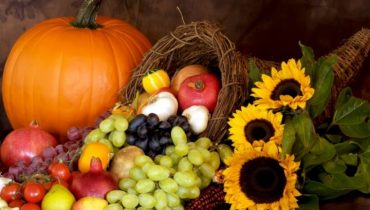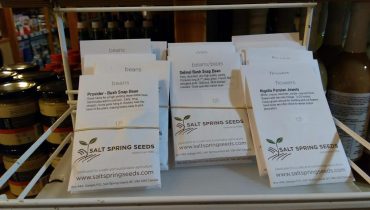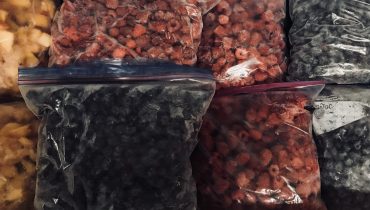Research & Writing by Hazel Appaqaq | Co-op Produce Buyer
~10 minute read
And now for another inspirational, eye-opening glimpse at the seasons travails in the hallowed Food System (or our corner of it), as recounted by our Discovery informant.
Arguably the most audacious development this summer, employees at a Bellingham Safeway were the mistaken recipients of a black market shipment gone awry. On Sunday, August 18th, the grocery stores produce workers were shocked to find, instead of a case of bananas, a case of approximately 50 pounds of cocaine! Obviously: how could this happen? Apparently: it happens every year. Similar discoveries occurred in two other Washington locations; the Bellingham shipment alone had an estimated value of $500,000. The logistics enabling such an occurrence have been attributed to the chain of transfers that the produce cases traverse on their journey to the consumer. At any one of the intervals—between the farmer, exporter, importer, the regional and local distributors, down to the grocery stores—some drug runner somewhere is able to weasel in two access points: switching the bananas out for the renegade merch, then coordinating with a sidekick down the line to surreptitiously unload it. Except by some unfavourable circumstance, or perhaps a breakdown in secret-coded memos, the pathway of insidious commerce is foiled… On a yearly basis. Consequently, whenever a case of coke turns up in a produce pallet, the supply chain is re-scoured for vulnerabilities, and security regulations are cinched up: a process that hurts the import market on the whole, since the increased vigilance adds extra burden to the movement of food across borders. Consider that more frequent random inspections can hold up shipping time, sometimes days longer than the expected transport period, which in turn detracts from appearance and shelf life – a small enough window for the fresh veg department. For a teensy grocer such as ourselves, it’s already a tightrope walk between having enough stock to meet optimal sales, but not too much that we eat a significant portion of the income from perishability. In my books, of all the problems to contend with, drug running through produce corridors takes the cake as the most redonkulous of them all!
Next, some other industry factoids that should cause a few heads to double-take. You may have noticed that the cherry season was a lean, expensive one – but for BC growers, the losses exceeded those on record going back about 20 years. The culprit was a pummelling of rain and hail at the worst time possible: right when the fruit was beginning to ripen. The damage amounted to enough splitting to preclude sorting out the good ones, the threshold of which is at about 25% splitting. After breaching this estimated proportion of the yield, large-scale growers will astonishingly be forced to let the luscious fruit fall to the ground and waste, because the cost in labour for picking and sorting would plain exceed the returns (-and sending it to be juiced isn’t much more profitable, either.) Which in itself is fairly unfathomable: not being able to pay for the processing and packaging of one quarter of the crop, being forced, by the tyranny of money, to abandon the entire harvest! A depression-era homesteader would have a heart attack at the idea!
But this thoroughly incongruous scenario leads us to a second, mind-boggling reality, which I’ve only just learned about, yet is apparently a thing in the cherry orchardists’ world: the use of helicopters for drying a wet harvest still on the trees. Yep. According to the BC Cherry Association, the income generation of the cherry harvest has grown to roughly 18 Million this year, and as such, growers may resort to such extreme tactics in order to save their means of livelihood from turning unshippable. In combination with other strategies, such as growing splitting-resistant varieties, and varieties that ripen at different times (to reduce the risk of losing the whole lot at a single time), orchardists will hire helicopters on a day following a heavy pelting, paying a staggering $1000 per hour! The downward rushing wind, and the downward turbulence, as well as the returning turbulence off the ground, will blow, and rustle the water droplets off the backs of the cherries. But this treatment doesn’t leave them bone dry, and since the dainty things can only absorb so much water through their skin before bursting, growers may also choose to follow up with… giant fans blowing from ground level. And even yet! This whole drying process is only retroactive: the growers may face the exasperating situation of getting rained on the following night, and in a fell swoop, all the previous days efforts, and their incredible expense, have been undone, and they’ll have to go through the whole rigmarole again. Then, just think how nerve wracking a gamble that would become: the more money they pour into preserving the precious baubles, the higher the impetus to not let them go to waste. In for a penny, right? But the cost of production has to be factored into the selling price, and the growers will eventually have to decide on a balance, between how much people will be willing to pay, and how much they’re willing to settle for themselves. Suffice to say that large scale ag always seems to be a picture of challenge stacked on top of challenge (times ten), topped off by hard choices.
In a similar theme to civilization’s characteristic habit of coming up with massively expensive, technological “solutions” (such as helicopters hovering over cherry trees), I also found it “interesting” (in a depressive, wet blanket sort of way…) to read about why broccoli is not being grown much in BC. The answer is that most of this provinces growers are too reticent to shoulder the financial inputs associated with the crop, of which US growers set the standard. Already the broccoli business is a tough nut to crack into. Compared to pretty much every other produce item, it’s saddled with a dramatically low yield-to-acreage ratio. Even corn, also considered among the low return crops, is about 10 times more prolific than broccoli. With such an unlikely starting point for a business plan, who would want to sink their dime into it? Additionally, established producers from the states have made it the industry practice to pour hundreds of thousands of dollars into harvesting equipment, dunk tanks, ice injectors, and the like, so that even with the freshness advantage that comes with being locally sourced – without this level of upgrades, BC growers can’t even begin to compete with the average case price. So they don’t, for the most part. Here we’ve struck upon a second aspect of the nature of giant agri-business. Whenever the perennial question pops up of why the pricing of an item seems steep, or why one veg is more expensive than a seemingly very similar one, it comes down to the two hats that farmers wear. Firstly, as navigators of the intricate game of large scale cultivation, their work is rooted in the finite parameters of the physical environment, including what each crop will tolerate, and require to truly thrive, and also how well they’ll survive shipping, both freshness-wise and in appearance. Secondly, as landowners with the imperative to pay off the mortgage on their tracts, which have sometimes been purchased at rates of 5 or 6 digits per acre, they also have to orient themselves towards the exacting demand of the bottom line.
An example where these two, competing boundaries gang up on the farmer is the amount of growing time which a single celeriac’s many-tendrilled root cannot do without in order to size up sufficiently. Compared to the bountiful potato which can be planted throughout a long period of the summer and still put out pounds and pounds of tubers per plant, celeriac’s smallish, lonely progeny, harvestable only after a long growth period is stuck with the status of being resource-hungry, and hence a higher price tag. Here it’s clear, via the farmers need to maximize production per unit of bed space, that more soil time and space translate directly to a higher proportion of the rent. So going back to the unavailability of BC brocc, it’s an ironic twist that the producers latter role, in the big picture, has evolved into the dominant, executive one, determining the lay of the industry at least as much as soil and climate, if not otherwise more so. Moving on, you can’t say much about the complexities of market dynamics without at some point referring to the highly sophisticated science of market predicting. The market reporter at Discovery and I both found it interesting to note that for some crops, expectations of consumption are now being mapped down to the region (East Walmarts, West Loblaws, Mexican Costcos, etc.), into very specific detail. A peek into the cooler of a Mexican scallion grower revealed that each localized allocation of scallions, as they were being vacuum dried in preparation for shipping, had specifications of not only the amounts, but also the length and breadth of the varieties. So this farmer was extrapolating how quickly the green onion market is trending, area by area, towards longer, thicker types, and away from skinnier, shorter varieties.
Zooming out, of more primary interest will be seeing what kind of wily tactics growers will develop in anticipation of the drastic, tectonic-level shifting, currently being precipitated by unpredictable weather phenomena. Take last winter and springs celery debacle, which amounted to a massive investment loss for all of our main producers – save for one or two growers who were less affected than the rest, and were able to sell at sky-high prices, for whom it was a stellar celery season! Some of last years players may opt out of the already high stakes game, what with celery’s extended gestational period, and susceptibility to inhospitable weather fluctuations. But others may choose to roll the dice again, by investing even more acreage into it, in the hopes that a seasonal repeat might create a celery monopoly (-a celopoly) in their favour this time ‘round. What does seem clear is that in a world where the borders of uncertainty are continuously being stretched year after year, at some point, such complex predictions will only be handy to an extent. Presently in the life of the food system, the modern farmers conundrum seems to be: how do you devise a strategy to make as much as you can and lose as little of your huge overhead costs as possible, while other players are vying against you for the same outcome, and while your target market is seeking to acquire the best product but pay the least, while the rules of the game (incredibly complex and interpretive to begin with) are being exacerbated by uncooperative and completely irregular growing conditions? A riddle to defy and discombobulate the mind, to be sure… So, could it be that what’s being called for is something more than the tactically scheming, contriving mind, to solve it? Modern society’s common denominator (pun intended) appears to be all-pervasive, tendrilling (like a monstrous celeriac!) through all sectors of its functioning.
But money isn’t the real trap, according to one islander. Leaf is a busy entrepreneur who’s venturing to build his various enterprises (as outlandish and far reaching as spirulina production; kayak manufacturing; and food truck construction) based on a new attitude towards… Okay, pretty much everything. You may have overheard him spouting an arcadian idea or two while buying your groceries. But the basic gist of his experientially-honed, business/life philosophy identifies the real obstacle to natures pre-existing abundance, as the competitive, scarcity-oriented, isolationist mentality, which seems to be defining humanity today. This doesn’t seem to be as simplistic as blaming competition in general, as that is an important aspect of nature’s own order within chaos. Rather, he describes having previously been stuck in the psychological rut of going about his projects by himself, based on the thinking that it would be easier that way: more efficient or convenient, with more control over the outcomes. But then realizing, first of all the loneliness of that life, and also that that perspective is actually the opposite of reality when one allows co-creation to occur! In an island-level shifting of the tide which addressed this very obstruction to actualizing, the Cortes Social Profit Forum was held at Linnaea in September, gathering many of the islands different types of community groups, the aim of which was, firstly, to serve as a springboard for the launch of the Cortes Island Foundation, but also simply to get all of the myriad of groups talking to each other, and perhaps sharing support. That this was necessary hints at the fact that our instinct to rely on each other has somehow been suppressed on the societal level. Fortunately, the collective voice carrying the message of the need to re-socialize inter-reliance, is increasing in volume and articulation. Dan Jason, creator of Salt Spring Seeds, spoke to it at his talk, put on by the Cortes Gardening Club. In his view, the future of any community’s functioning will be less focused on the price of work (-impersonal), and will instead center around finding who can do what you’re needing, and who wants what you’re willing to contribute (-personal). Leaf further likens this networking process to a pyramid, with the different kinds of available resources (in the hands of different people or parties in a community) situated at the bottom corners, including motivators like enthusiasm, inspiration, and vision in one corner, capacities like time, labour, and skills in a second, definite resources like land, infrastructure and equipment in a third, and indefinite resources like money in the fourth. Separated, these variables come up against each of their own limitations much sooner than if two or more of them combine forces. The point at the top of the pyramid represents the balance struck between those unique needs and requirements of the separate parties, the satisfaction of which avails them to share of their abilities, so that the resulting combination expands the bounds of what is achievable to the group. The co-op model is one example of the pyramid concept in action. Anyways, after this confluence of org reps, Leaf observed that as well as having a better grasp of the means available to enliven his current schemes, he came away feeling able to achieve all of his creative goals, as opposed to normally assuming that he’d have to choose between them. This suggests that the process of collaboration also has the power to feed back into the endeavours germination ground: back into imagination, inspiration, and enthusiasm – making it not only logistically advantageous but essentially empowering to the creative process on the whole. De Clarke, who was also present at the community meeting under multiple hats, reflected that it was an excellent beginning to a conversation which must continue for a while yet, especially pertaining to “the fact that the future isn’t going to look like yesterday. There was some serious thinking going on in the room […] showing how these organizations see themselves challenged by changes to come in the future, such as climate crisis.”
In The Hidden Life of Trees, Peter Wohlleben furnishes readers with a seasoned foresters perspective on the egalitarian, interchangeable roles of nurturance and support that trees of the same species exchange with each other – all within the context of a fierce struggle over the riches of the natural environment. He describes an observable interplay of both relationships in the healthy, old growth forest. Sometimes a parent tree supplies its offspring with minimal donations of sugars, via interconnecting roots, so that the seedling may subsist for decades, perched on the brink of death, in order to “teach” it how to grow at a healthy, slow pace and conserve resources. There’s a tempering of give-and-take, an apparent attitude of “just enough” for life to succeed itself. Or, sometimes trees will literally lean on each other in a group huddle, simply because they seem to know that it’s more energy efficient than manufacturing the structural requirements of standing upright and alone. Admittedly, I’m preaching to the choir in pointing out the benefit of once again placing nature as teacher. Living on our own, miniature continent has a way of showcasing, a) just how much we depend on each other within a stable economy, b) the fragility of our systems of sustenance, as when a key component like the food truck gets stuck at the ferries, and c) the rippling, all-pervasive effect of significant changes and slight fluctuations alike, to the day-to-day challenge of carrying on. Forests exhibit the very same dynamic, where it is in the community’s best interest to transmit assistance to a struggling neighbour, so that the moist, cool habitat won’t be interrupted every time an individual is in danger of falling down and creating an opening in the canopy. But it seems to me that the relative absence of BC broccoli shows how the isolationist-competition model works against the potentiality of the individual, which in the end amounts to widespread dependance on a system made possible by pollutive technologies, soil and ecosystem degradation, and social oppression. Of the aforementioned, modern farmers conundrum, if the “you” in the riddle were not strictly limited to this individual, isolated seeker, but included, through a connective ground of mutual interest and commonalities, a wide-reaching web of other thinkers, visioners, problem solvers, cheerleaders, land owners, skilled tradespeople, labour-helpers, network-connectors… then how can you manifest your aspirations and achieve your dreams? In multiple fields such as science, art, and philosophy, there’s the concept of ‘emergent properties.’ Meaning, faculties of a system, for example, that evolve unpredictably and unexpectedly, which the parts of the system did not separately display. Human consciousness is an emergent property of the brain. In a replacement of the Cartesian, mind-centered proof of selfhood, “I think; therefore I am,” we could have our own, Cortesian affirmation of being, a mantra for those among us curious to expand our circles of inclusion; that which we consider to be integral to our existence and survival. Integration is truly the operative word here, giving shape to the challenge, in today’s society, for the masculine and the feminine to find a meeting place in balance. Far from being synonymous to homogeneity, this harmony must inherently preserve our diversity as individuals and groups, yet embody a way of functioning where the whole compliments and uplifts the parts.




